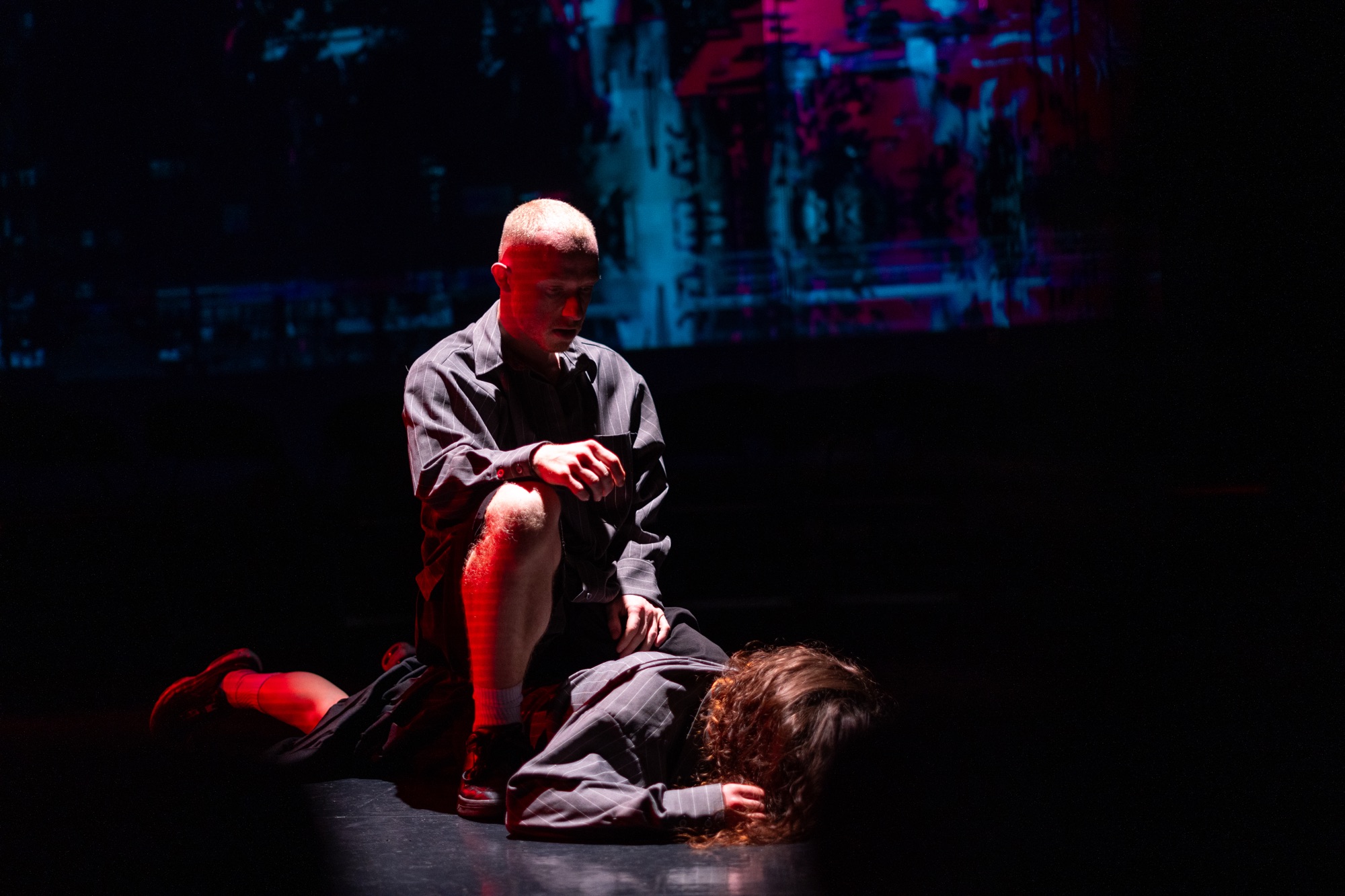Words by Katie Hagan.
How often do you think about our political leaders? Not so much about their policies or how some of them are devastatingly out-of-touch with reality, but the role their backgrounds play in defining them, specifically the boarding schools they attended?
This question is the basis of Caitlin Barnett Company’s new work Even The Devil Has Demons, which I saw at Streatham Space Project last Friday. Barnett is no stranger to making socially conscious work that overturns the historical narratives and perceptions we’ve been educated to believe. Even The Devil Has Demons follows Barnett’s work including Comrades in the Dark, which details the fate of IRA prisoner Bobby Sands who died on hunger strike in a Northern Ireland prison in the early eighties.
Even The Devil Has Demons takes place in the round, creating a really intimate space for the performance to accentuate its notes of the-isolating-effects-of-being-dumped-in-a-boarding-school-by-your-parents. After watching a moving short film about dance-making in Palestine (an inspiring and important inclusion for so many reasons), we the audience, sit in complete darkness, until a murmuring audio sound suffuses the space. Each performer (Lauren Jenkins, Naissa Nielsen, Dakarayi Mashava, Richard Pye) comes in one at a time, dancing their refrain. They’re all dressed in grey pinstriped outfits; the costume of an executive, all American Psycho.
The first dancer dances underneath a spotlight as if they’re their own star or iconographical figure that only they worship. They pump their body to some serious EDM, spinning, swerving and scooping. The three other dancers appear individually, taking it in turns to dance. As each dancer comes back into the space their movements escalate, getting bigger and more frantic.
Special mention to the use of the smoke machine throughout Even The Devil Has Demons which creates a murky and fuzzy haze that serves both visual and symbolical significance. It’s a stifling, hands-around-your-neck environment. Is the spotlight, then, not something to signify vanity but pressure or scrutiny?
After dancing solo, the performers form a squarish shape to do a high-power, thumpy and pumpy sequence. Developing the vibe of the first part, the dancers are in motion but emotionless; their movement is propulsive. Moments of softness come in to counter the hard thumps, as the dancers dive, dip and interlock like figures in the Trevi Fountain. Although this section establishes the rave-like vibe that sets the entire performance, it doesn’t feel like euphoria here but something sinister.
Altogether the choreography is abstract, save for a few moments that feel like quite an overt symbol. At one point the foursome come back together to make a scrum you’d see in a rugby game. They tussle with one another and push each other to their physical limits, much like what I imagine a boarding school experience might be.
The evening ends with a performance from young dancers from The BRIT School, who after a series workshops with the team and the project’s psychologist, choreographed their own section. It was equally as high energy as the main work and complemented its symbols and choreography.
The post-show talk helped provide added context behind the choice of subject matter. As someone who struggles to feel empathetic towards our current political leaders Even The Devil Has Demons definitely brought a new perspective on something I and others feel quite divided by.
I have so many questions after seeing this performance, which is what I love about going to see dance! How do you build empathy for these people? Are they deserving of it? Does it actually help to think about our political leaders in this way? Should we start from a point of anger or understanding? Is understanding or empathy an improbable aspiration given the current political climate?
What Even The Devil Has Demons left me with was its ability to get audiences interrogating their own world view. It is really important that dance – as an art form – continues to encourage its audiences to keep questioning what their perceive and why they perceive it, especially the judgements we make without perhaps considering the whole back-story.
Header image by Fabio Santos.
